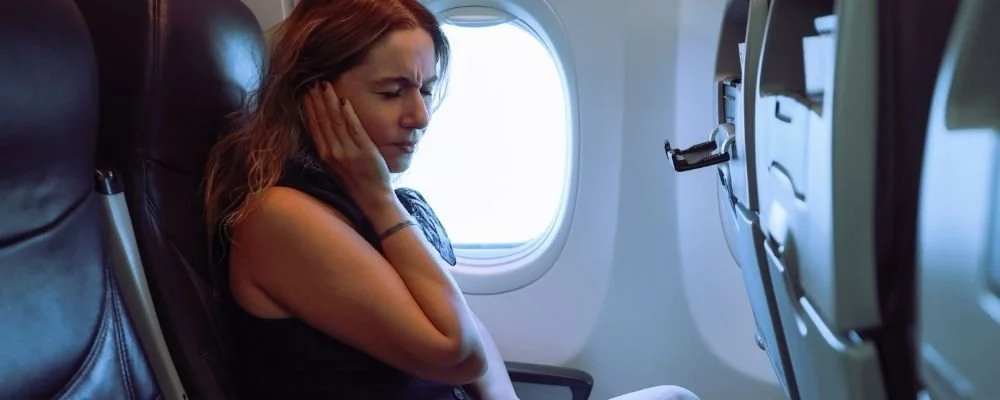Ear Pain on Planes: Why It Happens & How to Prevent It
Flying should feel exciting, not painful. But many travellers suffer from ear pain on planes, a condition often called “airplane ear” or ear barotrauma. This article explains what causes it, how to prevent it, and how your pre-flight routine at The Studio Goostrey’s Ear Spa can make a difference.
What is airplane ear (ear barotrauma)?
During takeoff and landing, cabin pressure changes rapidly.
The middle ear (behind the eardrum) must equalise with external pressure.
The Eustachian tube (connecting the middle ear to the throat) opens during swallowing, yawning, or jaw movement to let air in or out.
If the tube is blocked (due to congestion, inflammation, cold, or allergies), pressure builds up. That imbalance stretches the eardrum.
Mild cases cause discomfort or fullness; severe ones can cause sharp pain, muffled hearing, or (rarely) eardrum injury.
Why you're more likely to feel it
If you have a cold, allergy, sinus congestion, or recent ear problems.
During descent, pressure outside increases faster than your ears can equalise. That downward motion often triggers symptoms.
Sleeping through takeoff/landing prevents you from doing the pressure-equalisation actions.
Children are more vulnerable because their Eustachian tubes are narrower and less mature.
Repeated flights or underlying Eustachian dysfunction increase risk.
How to prevent ear pain on planes
1. Equalise pressure proactively
Yawn, swallow, or chew gum during takeoff and especially descent.
Use the Valsalva manoeuvre (gently blow with nose pinched, mouth closed) for mild resistance.
The Toynbee manoeuvre (pinch nose and swallow) is gentler in congested ears.
2. Use pressure-regulating or filtered earplugs
Earplugs designed for flights (e.g. “EarPlanes”) slow the rate of pressure change, letting your ears adjust more gently.
They don’t block all sound—they let announcements through but moderate the pressure change.
3. Use decongestants or nasal sprays (if you are healthy)
Taking a decongestant 30-60 minutes before descent can reduce congestion and help open the Eustachian tubes.
Nasal steroid sprays may help those with allergies or chronic congestion (use only under guidance).
4. Stay awake during takeoff and landing
Do not sleep during the phases of greatest pressure change.
If your flight is long, set an alarm to wake you near landing time.
5. Stay well-hydrated
Dry cabin air can thicken mucus and worsen congestion. Drink water frequently.
6. Avoid flying when significantly congested
If you have a cold, sinus infection, or ear infection, consider postponing your flight.
If you must fly, use decongestants, sprays, or discuss prophylactic options with a clinician.
What to do if your ears hurt during or after the flight
Try swallowing, yawning, or gentle Valsalva manoeuvres again.
A warm compress over the ear (e.g., a warm cloth) may help open tubes.
Use over-the-counter pain relief (paracetamol, ibuprofen) if no contraindications.
If ear pain, fullness, or muffled hearing persists beyond 24–48 hours, see an audiologist or ENT.
How The Studio Goostrey’s Ear Spa helps before travel
At The Studio Goostrey, we offer a dedicated Ear Spa service designed to optimise your ears before travel or holiday. Here's how it benefits you:
Gentle ear examination and wax removal (if needed) ensure no blockage.
Soothing cleansing, hydration, and decongestant treatment to reduce swelling.
Advice on pressure-balancing techniques and customised earplugs.
Preflight treatment ensures your Eustachian tubes are in the best possible condition to cope with pressure changes.
If you book your Ear Spa session a day or two before flying, you reduce the risk of congestion or blockages that aggravate ear pain in the air.

